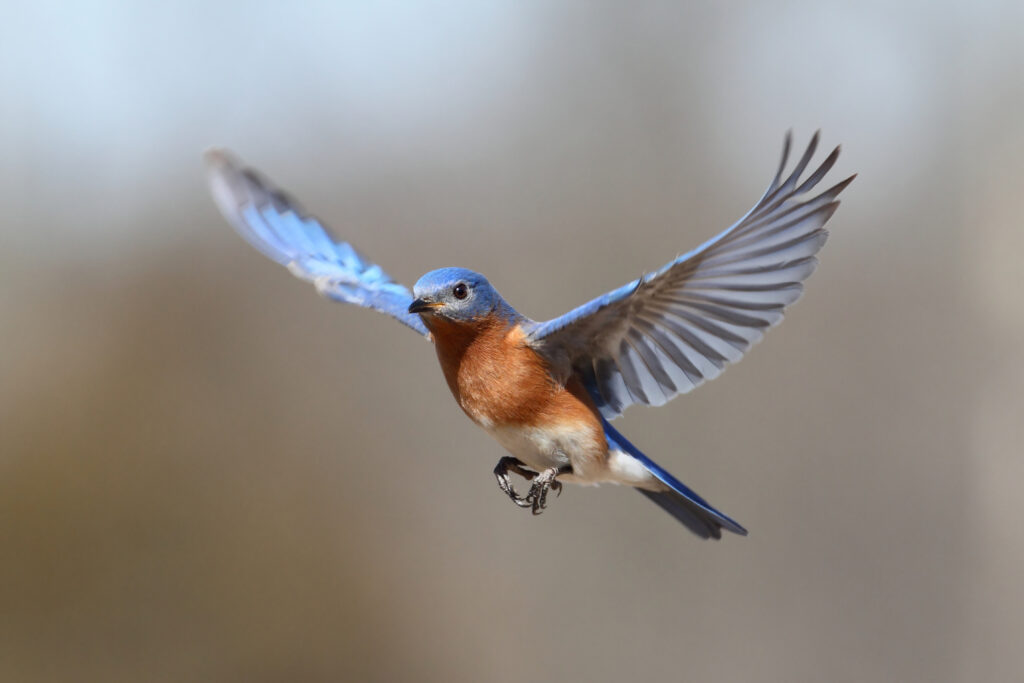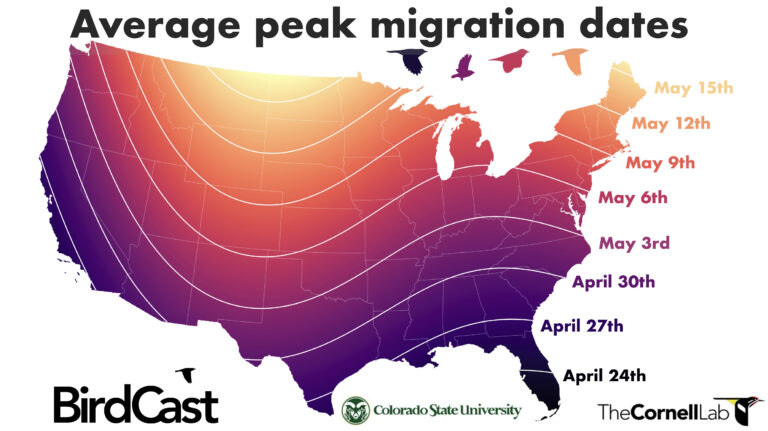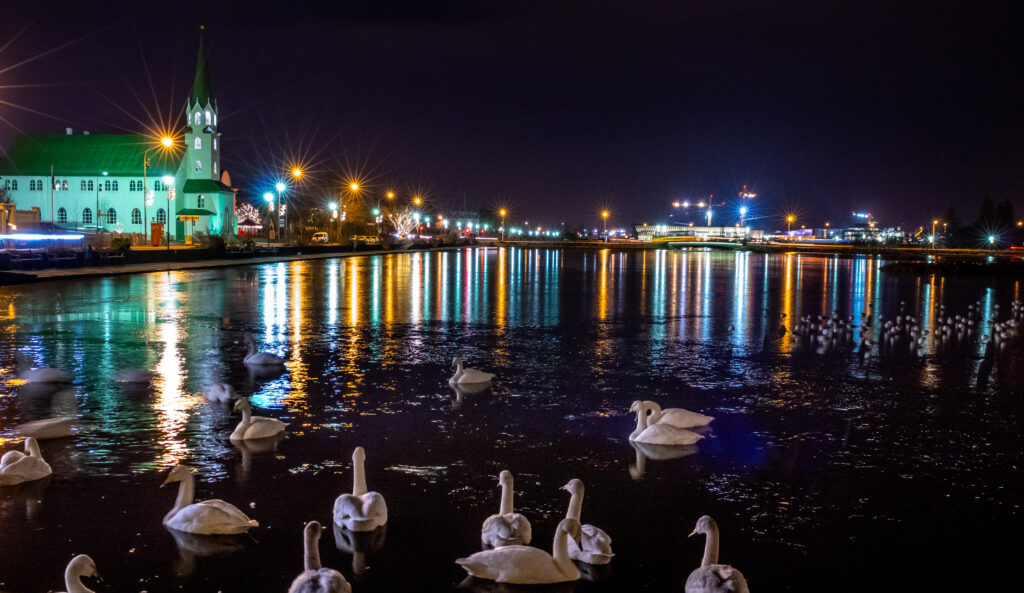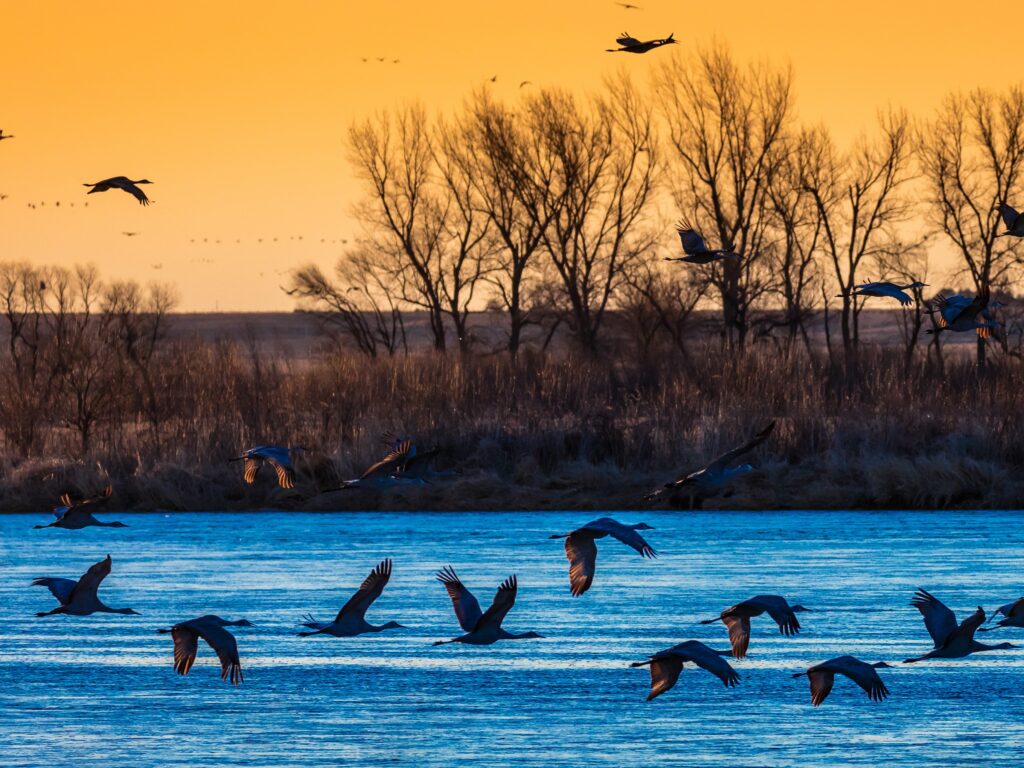A cloud of slate gray stirring above the riverbed. The synchronous flapping of wings, eager and ready for the journey to the north. During this time of year, an estimated 3.5 billion birds take flight toward the northern U.S. and Canada as the spring migration is underway. During the long journey, they will have to contend with a pernicious source of pollution emanating from towns and cities: artificial light. Birds rely on light as an indicator of daily and seasonal change, and human light “pollution” can have serious negative effects on migrating birds, jeopardizing their ability to move safely through the night sky.
 Light pollution impacts migrating birds in a variety of ways. It increases the likelihood of deadly collisions with lit buildings and other forms of infrastructure, such as bridges or power lines. It also affects the ability of birds to accurately locate stopover sites—places to rest and find food—during seasonal migrations. Most migratory birds are incredibly sensitive to light and may become disoriented, flying towards it whether it is artificial or not.
Light pollution impacts migrating birds in a variety of ways. It increases the likelihood of deadly collisions with lit buildings and other forms of infrastructure, such as bridges or power lines. It also affects the ability of birds to accurately locate stopover sites—places to rest and find food—during seasonal migrations. Most migratory birds are incredibly sensitive to light and may become disoriented, flying towards it whether it is artificial or not.
Furthermore, many bird species’ instinct to migrate is affected by temperature shifts, daylight availability, and wind patterns. With a changing climate, wind patterns and temperatures are likely to shift as well, making it even more important to reduce light pollution.
“Many wildlife species rely on connected habitat for their migrations, from pronghorn to salmon to pelicans,” says Zack Wurtzebach, U.S. Program Director for the Center for Large Landscape Conservation. “While we often think about connectivity on land and water, it’s also so important to consider ‘aeroconservation’ actions that address threats to species movement in the air. This goes hand in hand with ensuring a connected network of land and water habitat patches birds can use as stopover sites during their long journeys.”

What can I do about light pollution?
Turning off or dimming lights is the easiest way to reduce the impacts of light pollution on birds during the migration season. When this isn’t an option, changing the color and intensity of your outdoor lighting can also reduce impacts. The following are some additional and basic methods to reduce light pollution, particularly during migration season when the skies are filled with migrating birds:
- At night, be sure to only use lights when needed.
- Be targeted with your lighting, using shields at the top of your light or ensuring you are aiming your lighting downward.
- Minimize the brightness of lighting when you must use it, and be mindful of the surfaces below your light fixtures, as some are more reflective than others.
- Use motion detectors or light timers when possible, whether for dimming or whether they are on at all.
- Use warmer colored lighting, or short wavelength lighting, as bright, blue-toned lighting is especially disruptive for wildlife.
What are communities doing to help?

There are many examples of effective light pollution management across the United States. The Audubon society has developed a program called Lights Out, where “[t]he strategy is simple: by convincing building owners and managers to turn off excess lighting during the months migrating birds are flying overhead, we help to provide them safe passage between their nesting and wintering grounds.”
The US Fish and Wildlife Service oversees a similar program, the Urban Bird Treaty, in which cities across the country engage in public-private partnerships aimed at conserving birds and their habitat through collaboration with local communities on conservation, science, education and recreational activities aimed at making urban areas more healthy and bird-friendly.
Check out these programs to see if your community is engaged and get involved yourself! Switch out your outdoor light bulbs, put the lights on motion timers, and minimize the lighting your dwellings use. And during this year’s busy bird migration season, check out these live bird migration maps by Birdcast and be on the lookout for the migrating species near you.



